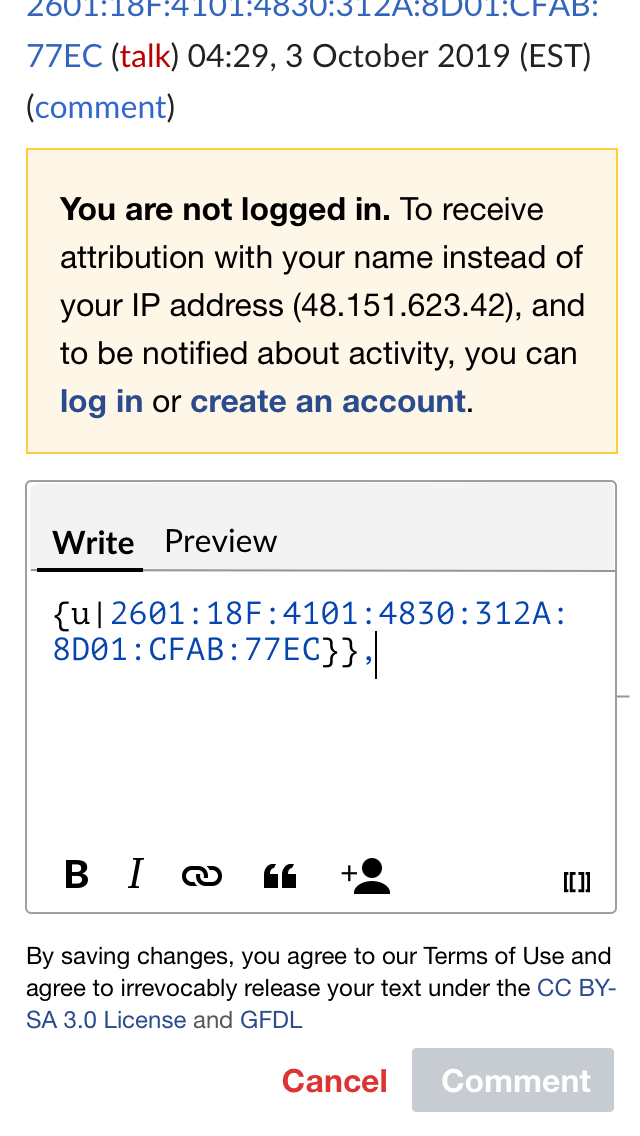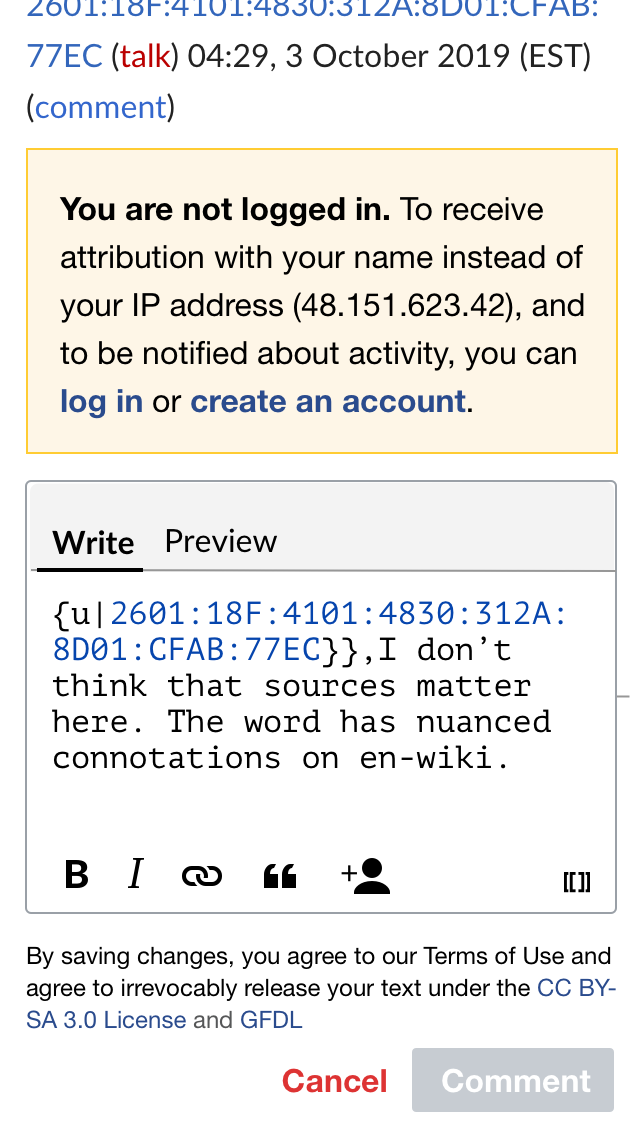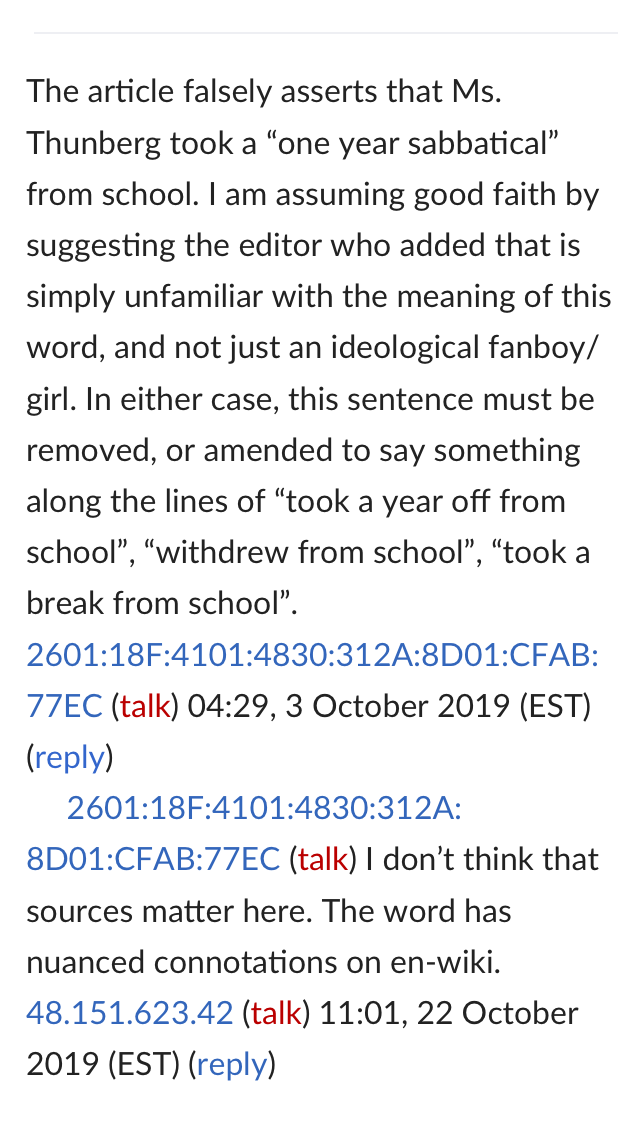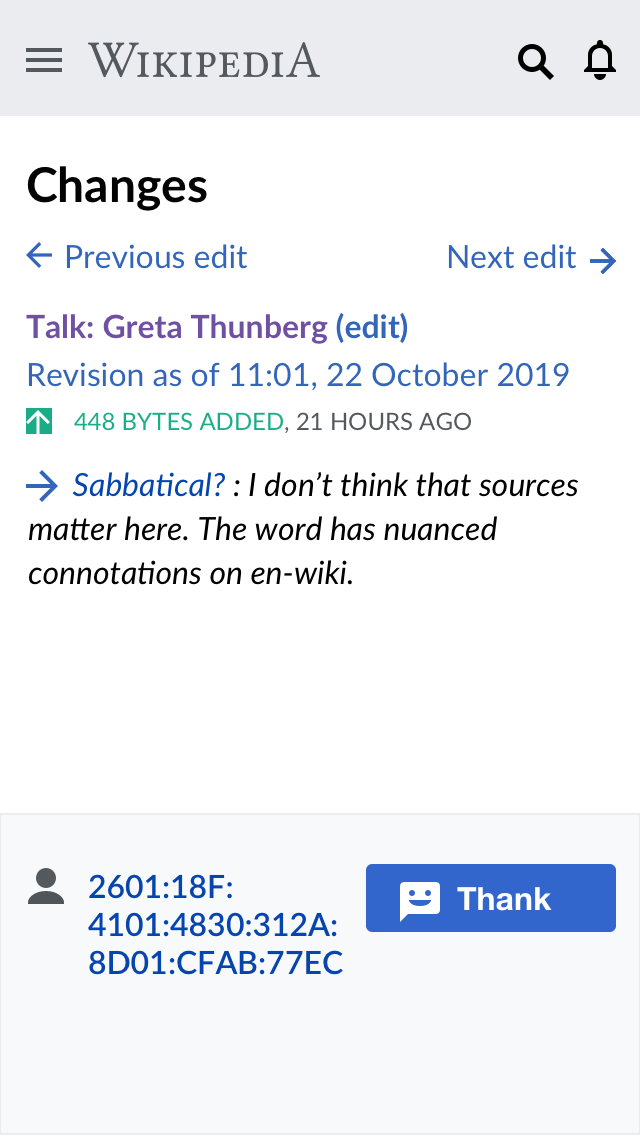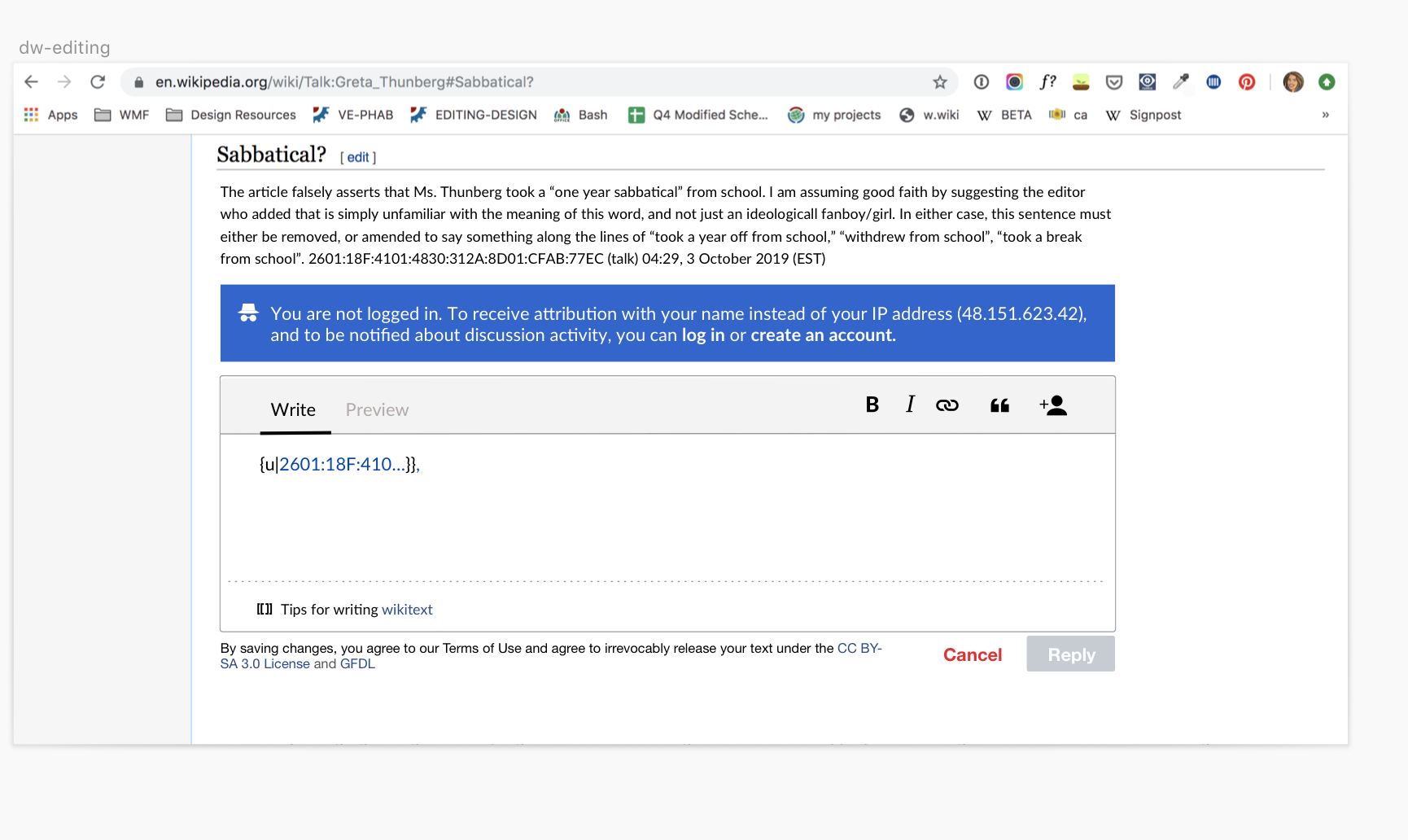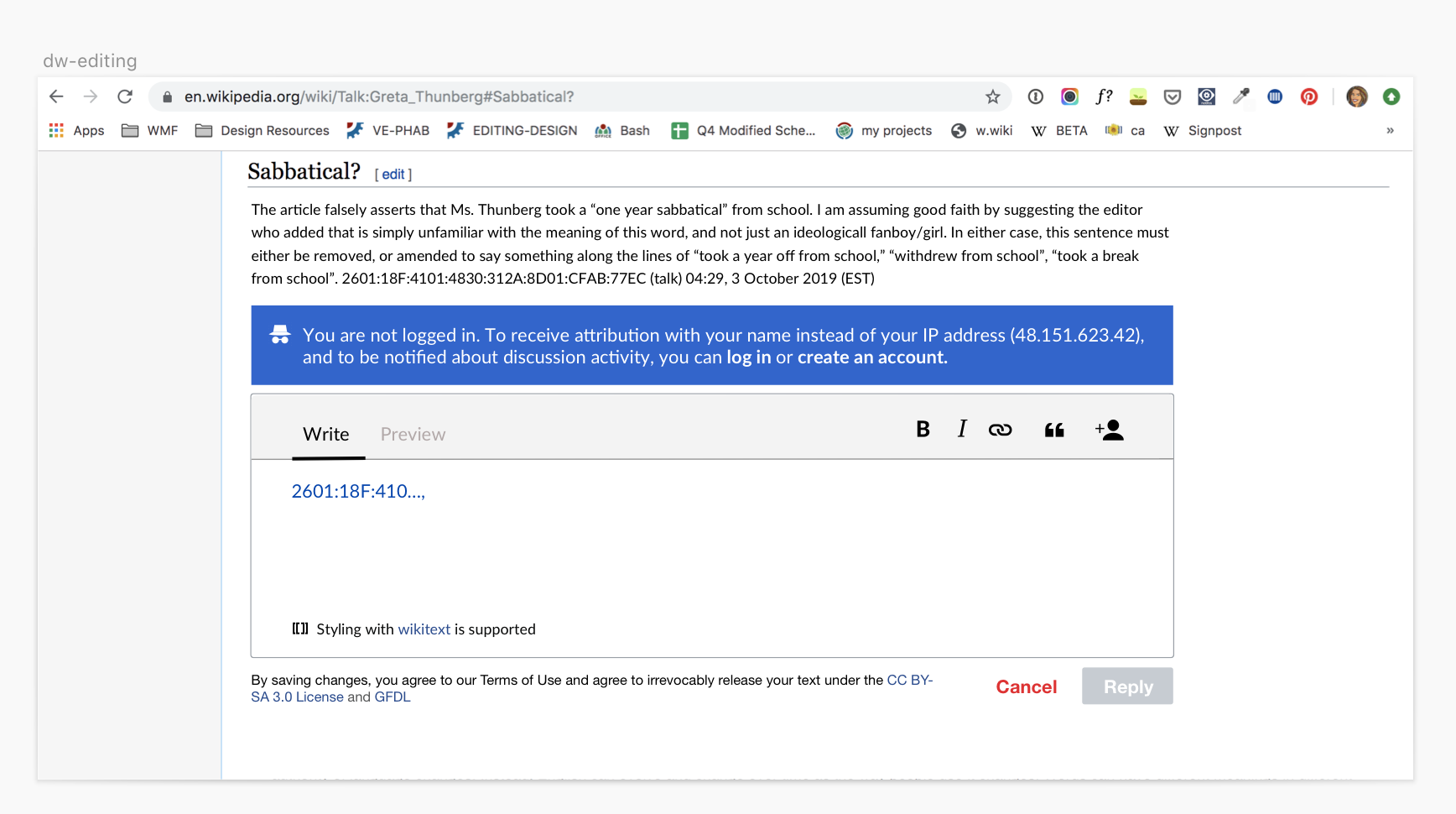Rationale
We are striving to make contributing to talk pages easier and more intuitive. Where "easier" means requiring less effort and where "intuitive" means obvious, not requiring context or specialized knowledge about how to do something
Two key ways of contributing to/participating on talk pages is starting a new discussion/topic or replying to an existing one
Trouble is – as the Talk Page consultation and the team's research over the past couple of weeks uncovered – contributors, across experience levels, find replying to specific comments on Talk pages to be challenging.
This initial version will involve building the basic reply functionality we anticipate existing contributors will expect and value while making minimal changes to talk pages' visual appearance.
User stories
As a contributor I can...
- Know my IP address will be published along with my comment if I do not log in or create an account
- Reply to specific comments within a discussion without changing the state of the page
- Draft a reply in a text field using wikitext while being able to see the comment(s) I am replying to
- Discard a reply without publish it
- Preview how my reply will appear once it's posted to the talk page
- Have my edit summary created automatically
- Have my reply indented/outdented to the proper depth automatically
- Know my comment was posted successfully (new reply should be temporarily highlighted)
- Have the time and date of my post, a link to my user page and a link to my talk page included with my reply automatically
Delete a reply I've already posted on a talk page- See the date and time a comment was made, in my local timezone and preferred date format
- Attempt to post a comment with notation for signing my name or indenting/outdenting my comment without breaking the experience
- Click "Cancel" and not need to worry my drafted comment will be discarded without confirming my intent
- Navigate away from web page (e.g. clicking browser's "back" button or closing browser tab) and not need to worry my drafted comment will be discarded without confirming
Mockups
| Reading | Tap on reply | Edit | Publish and highlight | final | revision history | |

